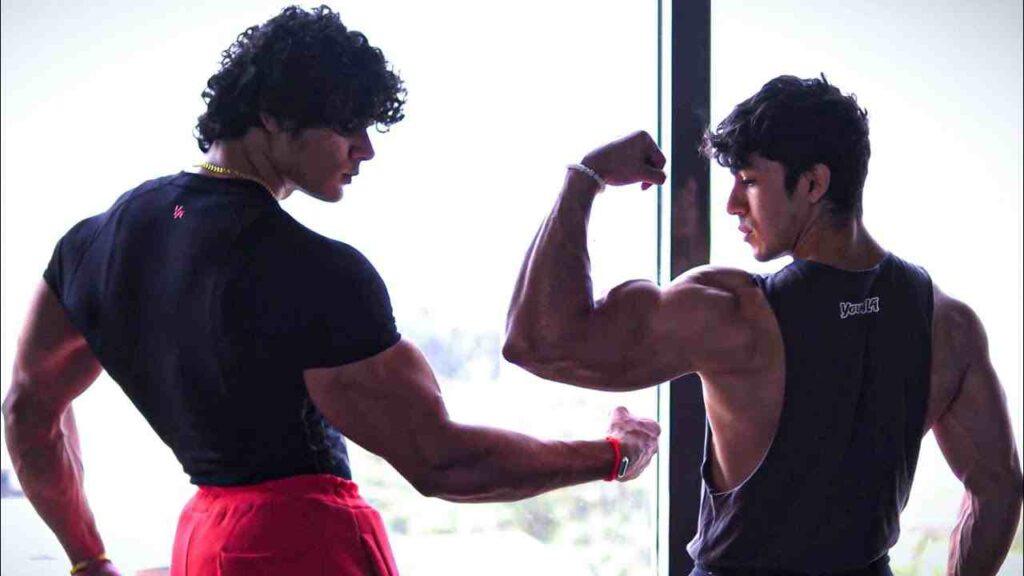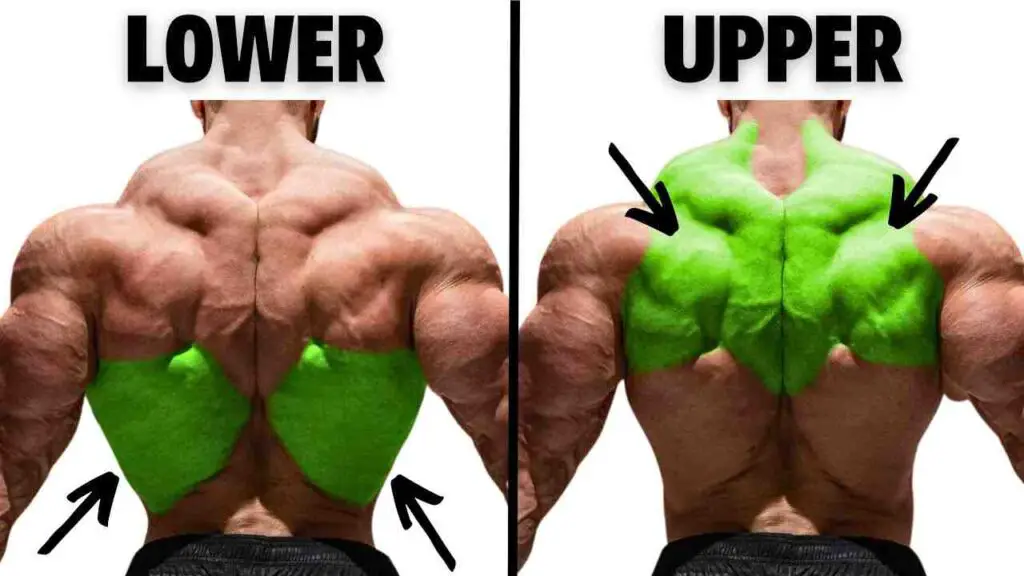When it comes to building impressive arms, the biceps often steal the spotlight. However, did you know that your bicep is made up of two parts? The bicep brachii, as it’s scientifically known, consists of a short head and a long head. While both play a crucial role in flexing the arm, the long head of the bicep is particularly important for strength and aesthetics. It contributes to the coveted ‘peak’ of the bicep, making your arms look more defined and muscular.
SHOP FOR THE ADJUSTABLE DUMBBELL SET ON AMAZON
In this article, we will delve deep into the world of bicep long head exercises. We’ll explore the anatomy and function of the bicep long head, discuss the best exercises to target this muscle, and provide tips on proper form and technique. Whether you’re a gym newbie or a seasoned athlete, this guide will help you understand your biceps better and train them more effectively.
Understanding the Bicep Muscle
The bicep muscle, often referred to simply as the “bicep,” is one of the most iconic muscles in the human body. It’s the muscle that creates that coveted bulge in your arm when you flex, and it plays a significant role in both functional movements and aesthetics. To truly appreciate the importance of bicep long head exercises, it’s essential to understand the anatomy and function of this muscle.
Anatomy of the Bicep Muscle
Exploring the anatomy of the biceps is a fundamental aspect of understanding how the muscle functions and how it can be effectively targeted through exercise. Here’s a breakdown of the anatomy of the biceps:
- Muscle Composition: The biceps brachii muscle, commonly referred to as the biceps, is a two-headed muscle located in the front of the upper arm. It consists of a long head and a short head, both of which originate from different points on the scapula (shoulder blade) and converge to insert onto the radius bone of the forearm.
- Long Head: The long head of the biceps originates from the supraglenoid tubercle of the scapula, which is a bony prominence above the shoulder joint. It travels down the arm and merges with the short head to form the main bulk of the biceps muscle.
- Short Head: The short head of the biceps originates from the coracoid process of the scapula, another bony projection near the shoulder joint. It is situated on the inner side of the arm and contributes to the overall shape and function of the biceps.
- Insertion: Both heads of the biceps converge to form a single tendon, known as the biceps tendon or the distal biceps tendon. This tendon attaches to the radial tuberosity, a bony prominence on the radius bone near the elbow joint.
- Function: The primary function of the biceps muscle is elbow flexion, which involves bending the elbow joint to bring the forearm closer to the upper arm. Additionally, the biceps assists in supination, the rotation of the forearm that turns the palm face up.
- Innervation: The biceps muscle is innervated by the musculocutaneous nerve, which originates from the brachial plexus. This nerve supplies motor signals to the biceps, allowing it to contract and perform its functions.
Understanding the anatomy of the biceps provides insight into how it functions during various movements and exercises. Targeting specific heads of the biceps through exercises can help individuals develop balanced and well-defined arm muscles.
Why the Long Head Matters
While both heads of the bicep are important for overall arm strength and appearance, the long head deserves special attention. It’s the part of the bicep that gives it that coveted “peak” and contributes to arm aesthetics. A well-developed long head can make your arms look more sculpted and impressive.
SHOP FOR THE BARBELL WEIGHTS ON AMAZON
Moreover, targeting the long head isn’t just about appearance. It also contributes to balanced muscle development and can help prevent muscle imbalances that may lead to injury. Neglecting the long head can result in an uneven, less appealing bicep shape.
In conclusion, the bicep is a complex muscle with multiple functions, and its long head plays a vital role in both function and aesthetics. By understanding the anatomy and function of the bicep, you’ll be better equipped to appreciate the importance of incorporating bicep long head exercises into your workout routine.
Benefits of Targeting the Bicep Long Head
Targeting the bicep long head in your workout routine offers a range of benefits that go beyond just building bigger arms. Here are some key advantages:
- Enhanced Arm Symmetry: Focusing on the long head of the bicep helps create a well-rounded and proportionate appearance in your arms. This is essential for achieving that coveted “peak” in your bicep muscle, contributing to an aesthetically pleasing arm shape.
- Improved Overall Bicep Development: While the bicep brachii has two heads (the long head and the short head), the long head makes up a significant portion of the muscle mass. Strengthening the long head ensures that your bicep muscle is fully developed, giving your arms a fuller and more impressive look.
- Increased Bicep Definition: Developing the long head can lead to better muscle separation and definition in the bicep. This added definition not only looks great but also showcases your hard work and dedication in the gym.
- Functional Strength: A strong long head of the bicep contributes to functional strength in your arms. This can improve your ability to perform everyday tasks that involve lifting or pulling, making daily life easier and less physically taxing.
- Injury Prevention: A well-balanced bicep, including a developed long head, can help stabilize the shoulder joint. This added stability can reduce the risk of shoulder injuries and imbalances that might occur from overemphasizing the short head of the bicep.
- Confidence Boost: Achieving a fully developed bicep long head can boost your self-confidence, both inside and outside the gym. Feeling and looking strong can have a positive impact on your self-esteem and overall well-being.
- Balanced Physique: A developed long head contributes to a balanced and harmonious physique, especially when combined with a well-developed chest, back, and shoulders. This balance is often sought after by bodybuilders and fitness enthusiasts.
In conclusion, targeting the bicep long head in your workouts is not just about building bigger arms; it’s about achieving a well-rounded, proportionate, and aesthetically pleasing physique while reaping the functional benefits of increased strength and injury prevention.
Top Bicep Long Head Exercises
When it comes to building impressive biceps, it’s crucial not to neglect the long head of the bicep. The long head is the muscle responsible for the peak and overall shape of your bicep. By incorporating the following top bicep long head exercises into your workout routine, you can develop a well-rounded and aesthetically pleasing set of biceps.
1. Barbell Curls
Barbell curls are a classic exercise that targets the bicep long head for overall arm development.

How to:
- Stand with feet shoulder-width apart, holding a barbell with an underhand grip.
- Curl the barbell towards your chest while keeping your elbows stationary.
- Slowly lower the barbell to the starting position.
Tips:
- Use proper form to avoid using momentum.
- Start with a manageable weight and gradually increase it.
2. Incline Dumbbell Curls
Incline dumbbell curls shift the focus to the long head and emphasize the peak of the bicep.
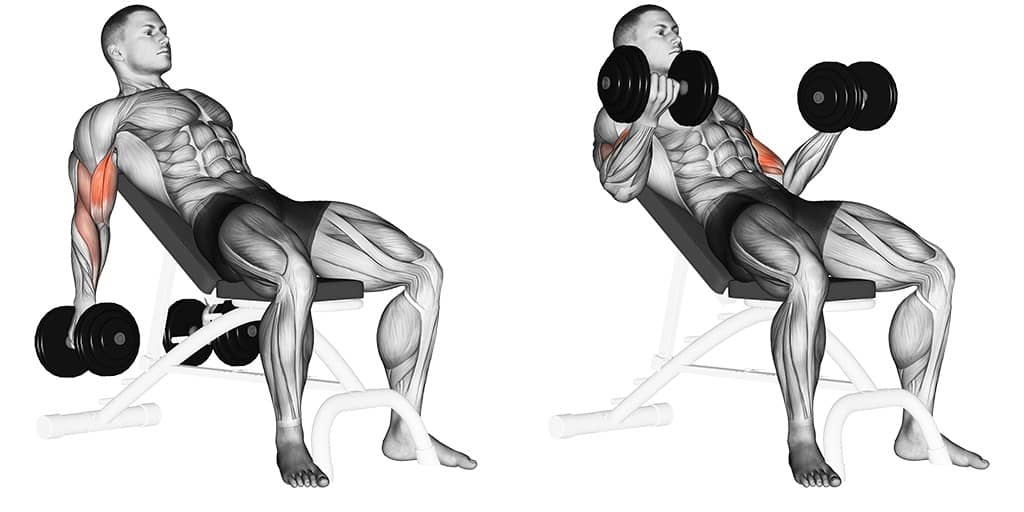
How to:
- Sit on an incline bench with back support, holding a dumbbell in each hand.
- Let your arms fully extend, then curl the dumbbells upward.
- Squeeze the biceps at the top, then lower the weights.
Tips:
- Maintain a controlled movement to isolate the long head.
- Adjust the bench angle for different variations.
3. Hammer Curls
Hammer curls target both the long head and brachialis muscles, adding thickness to your arms.
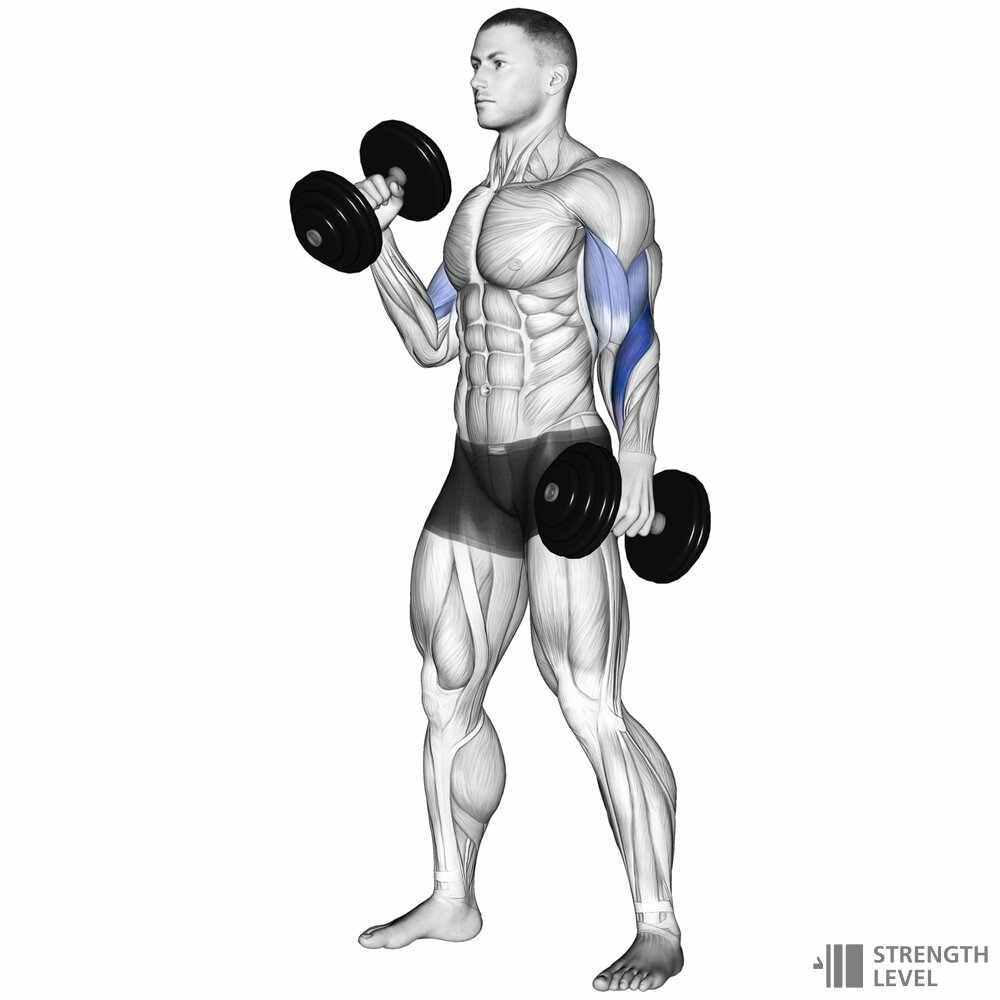
How to:
- Hold a dumbbell in each hand with a neutral grip (palms facing each other).
- Keep your elbows close to your torso as you curl the dumbbells.
- Lower the weights in a controlled manner.
Tips:
- Focus on the squeeze at the top of the movement.
- Use a challenging but manageable weight for best results.
4. Concentration Curls
Concentration curls isolate the bicep long head, providing a deep burn and peak development.
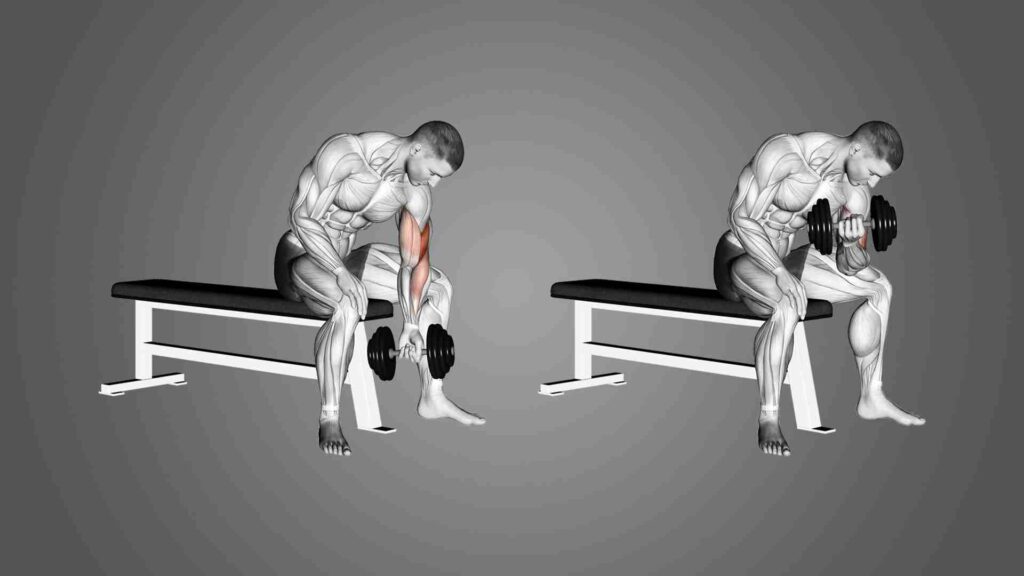
How to:
- Sit on a bench with legs apart, hold a dumbbell in one hand, and rest your elbow against your thigh.
- Curl the dumbbell upwards, keeping your upper arm stationary.
- Lower the weight with control.
Tips:
- Maintain strict form and concentrate on the bicep contraction.
- Perform equal reps on each arm.
5. Preacher Curls
Preacher curls emphasize the long head by eliminating momentum and isolating the biceps.
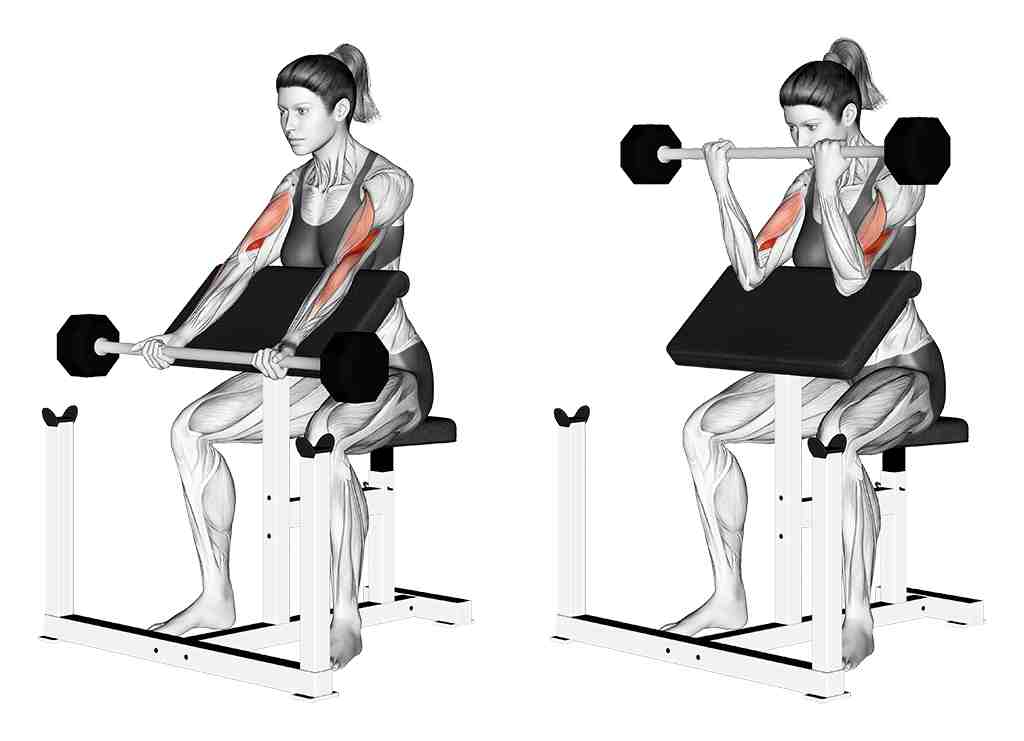
How to:
- Use a preacher curl bench with your arms extended over the pad.
- Hold a barbell or dumbbell, curl upwards, and squeeze at the top.
- Slowly lower the weight.
Tips:
- Focus on the mind-muscle connection for better results.
- Start with a lighter weight to master form.
SHOP FOR THE FOAM ROLLER ON AMAZON
Incorporate these top bicep long head exercises into your workout routine, ensuring proper form and gradually increasing the weight to challenge your muscles.
Sample Bicep Long Head Workout Routine
Here’s a sample bicep long head workout routine that you can follow to target and develop your bicep long head effectively. This routine can be performed at the gym, but you can also adapt it for a home workout if you have the necessary equipment.
Day 1: Bicep Emphasis
Barbell Curls
- Warm-up: 1 set of 10-12 reps with a light weight.
- Working sets: 3 sets of 8-10 reps with a challenging weight.
Hammer Curls
- 3 sets of 10-12 reps with dumbbells.
Preacher Curls
- 3 sets of 8-10 reps using an EZ curl bar or dumbbell.
Rest: 60-90 seconds between sets.
Day 2: Rest or Active Recovery (Stretching/Yoga)
Day 3: Bicep Emphasis
Incline Dumbbell Curls
- Warm-up: 1 set of 10-12 reps with a lightweight.
- Working sets: 3 sets of 8-10 reps with a challenging weight.
Concentration Curls
- 3 sets of 10-12 reps with a dumbbell, focusing on each arm individually.
Hammer Curls (Alternate Variation)
- 3 sets of 10-12 reps with a different grip or angle.
Rest: 60-90 seconds between sets.
Day 4: Rest or Active Recovery (Stretching/Yoga)
Day 5: Bicep Emphasis
Barbell Curls (Alternate Variation)
- Warm-up: 1 set of 10-12 reps with a light weight.
- Working sets: 3 sets of 8-10 reps with a challenging weight.
Preacher Curls (Alternate Variation)
- 3 sets of 8-10 reps using a different grip or angle.
Incline Dumbbell Curls (Alternate Variation)
- 3 sets of 10-12 reps with a different angle or technique.
Rest: 60-90 seconds between sets.
Day 6: Rest or Active Recovery (Stretching/Yoga)
Day 7: Active Rest or Optional Cardio
Notes:
- Warm-up with a lighter weight to prevent injury and prepare your muscles.
- Focus on maintaining proper form throughout each exercise.
- Use a weight that challenges you within the recommended rep range.
- Progressive overload is key for muscle growth, so aim to increase weight or reps over time.
- Ensure you maintain a balanced diet and get enough rest for muscle recovery and growth.
SHOP FOR THE FITNESS TRACKER ON AMAZON
Remember that consistency is crucial in any workout routine. Adjust the weights and repetitions as needed to match your fitness level and gradually increase intensity as you progress.
Common Mistakes to Avoid
When it comes to working on your bicep long head, avoiding common mistakes is crucial to achieving the best results and preventing injury. Here are some pitfalls to watch out for:
- Neglecting Proper Form: One of the most common mistakes is sacrificing form for heavier weights. Using improper form not only reduces the effectiveness of the exercise but also increases the risk of injury. Always prioritize correct form over lifting heavy weights.
- Overtraining: While building your bicep long head is essential, overtraining can lead to burnout and injury. It’s important to allow your muscles to recover adequately between workouts. A well-planned workout routine with sufficient rest days is key.
- Ignoring Other Muscle Groups: Focusing solely on bicep long head exercises can lead to muscle imbalances. Make sure to incorporate exercises for other muscle groups in your workout routine, such as the triceps, shoulders, and back, for overall arm development and balance.
- Not Using a Full Range of Motion: Partial repetitions won’t fully engage the bicep long head. Ensure that you perform each exercise through a complete range of motion to target the muscle effectively and stimulate growth.
- Relying on a Single Exercise: Some individuals stick to only one or two bicep exercises, thinking it’s enough. Variety is key to continuous progress. Incorporate a range of exercises to challenge your muscles from different angles and stimulate growth.
- Ignoring Nutrition: Building muscle isn’t just about exercise; it’s also about nutrition. Neglecting your diet by not consuming enough protein and essential nutrients can hinder your progress. Make sure you’re fueling your body adequately.
- Lifting Too Light: On the opposite end of the spectrum, lifting weights that are too light won’t provide the necessary stimulus for muscle growth. Gradually increase the weight as you become stronger to continue progressing.
By avoiding these common mistakes, you’ll not only improve the effectiveness of your bicep long head workouts but also reduce the risk of injuries, ensuring a safe and productive fitness journey.
Nutrition and Recovery
Optimizing your nutrition and recovery strategies is essential for muscle growth and repair. Here’s some advice to help you support your body’s recovery process:
- Protein Intake: Protein is vital for muscle repair. Aim for about 1.4–2.0 grams of protein per kilogram of body weight per day to maximize muscle growth. Include a high-protein meal or supplement pre- or post-workout to support muscle recovery.
- Carbohydrates: Your muscles store carbohydrates as glycogen, which is crucial for energy during exercise. Post-workout, combine carbohydrates with protein to replenish glycogen stores and improve muscle repair.
- Healthy Fats: Include healthy fats in your diet to minimize inflammation and support overall health. Foods like avocados, nuts, and fatty fish are excellent choices.
- Hydration: Stay well-hydrated by drinking water throughout the day. Adequate hydration is necessary for optimal muscle function and recovery.
- Sleep: Aim for 7-9 hours of sleep each night to allow hormones like testosterone and growth hormone to optimize muscle repair and development.
- Rest Days: Incorporate 1-2 rest days between intense training sessions for specific muscle groups to allow for proper recovery.
- Nutrient Timing: Time your meals strategically around your training sessions to optimize energy availability and recovery.
- Micronutrients: Ensure you’re getting enough vitamins and minerals, which play a role in muscle function and recovery. Consider a multivitamin supplement if you’re not getting enough from your diet.
- Supplements: While not a substitute for a balanced diet, certain supplements like BCAAs, creatine, and omega-3 fatty acids can support muscle recovery.
- Stress Management: Chronic stress can impede recovery, so incorporate stress-reducing activities like meditation, yoga, or light walking into your routine.
SHOP FOR THE PROTEIN SUPPLEMENTS ON AMAZON
Remember, a balanced approach to nutrition and recovery will not only support muscle growth and repair but also enhance your overall performance and well-being.
FAQs
Q 1. How often should I train my bicep long head?
Ans. It’s recommended to train your bicep long head 1-2 times per week with sufficient rest between sessions to allow for recovery and muscle growth.
Q 2. Can women benefit from these exercises too?
Ans. Absolutely! Bicep long head exercises are beneficial for both men and women, as they contribute to overall arm strength and aesthetics regardless of gender.
Q 3. Is it necessary to use heavy weights?
Ans. While heavy weights can be effective for muscle growth, it’s not always necessary. Focus on using weights that challenge your muscles while maintaining proper form to prevent injury.
Q 4. How long does it take to see results?
Ans. Results vary from person to person, but with consistent effort, you can expect to see noticeable improvements in your bicep long head within a few weeks to a few months.
Q 5. What if I have elbow or wrist pain during these exercises?
Ans. If you experience discomfort, it’s crucial to stop the exercise and consult a fitness professional or healthcare provider. It might indicate improper form or an underlying issue that needs addressing.
Q 6. Can I do these exercises at home without gym equipment?
Ans. Yes, you can adapt some bicep long head exercises for home workouts. For example, you can use resistance bands, bodyweight exercises like push-ups, or household items as makeshift weights to target your bicep long head effectively.
Conclusion
In conclusion, developing the bicep long head is not only essential for achieving well-rounded and aesthetically pleasing arms but also for overall arm strength and function. By incorporating the top bicep long head exercises into your workout routine, you can target this muscle effectively and see significant improvements over time.
Remember, consistency and proper form are key to success in any fitness endeavor. Start slow, gradually increase the intensity, and pay attention to your body’s signals to avoid injury. Combine your training with a balanced diet rich in protein and allow your muscles to recover adequately for optimal results.

Good day, and welcome to Fitthour. My name is Shubham Vijay, and I am a certified personal trainer and nutrition coach with 6 years of experience in the fitness industry. At Fitthour, we specialize in types of training, such as strength training, cardio, or HIIT, and our mission is to help clients achieve their fitness goals and improve their overall health.

